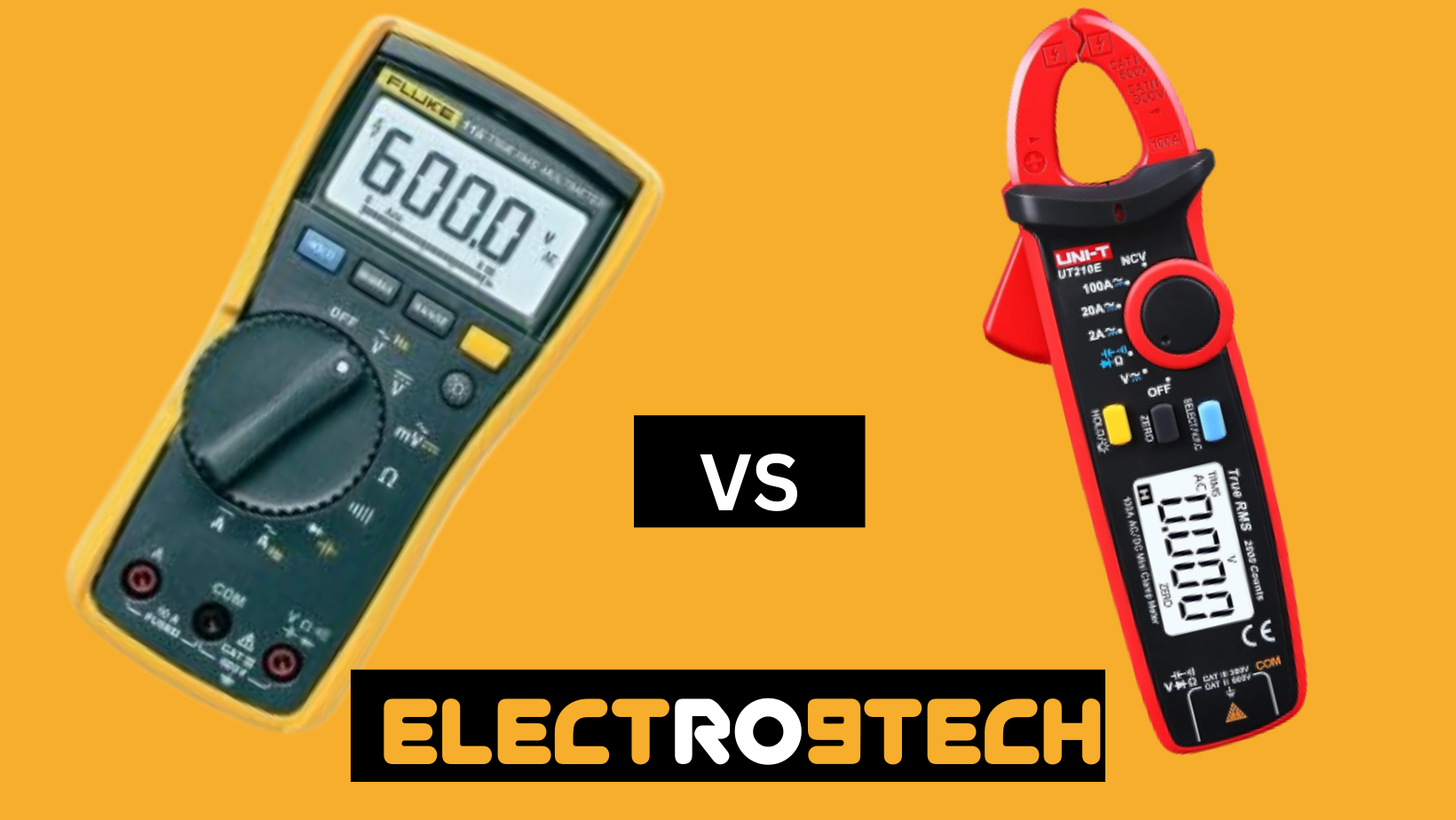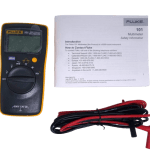In the world of electrical troubleshooting and maintenance, having the right tools at your disposal can make all the difference. That’s why understanding the nuances between instruments like the Multimeter vs Clamp Meter is crucial. These two commonly used devices for measuring electrical parameters serve distinct purposes, but which one should you choose for your specific needs? In this article, titled “Multimeter vs Clamp Meter,” we’ll explore the differences between them to help you make an informed decision.
Table of Contents
Multimeter vs Clamp Meter Detailed Guaid
1. Introduction
Multimeters and clamp meters are essential tools for electricians, engineers, and DIY enthusiasts alike. They help measure various electrical parameters such as voltage, current, resistance, and continuity. However, they employ different methods to obtain these measurements.
2. What Is a Multimeter?

A multimeter, short for “multiple meter,” is a versatile handheld device that combines several measurement functions in one unit. It typically measures voltage (AC and DC), current (AC and DC), resistance, continuity, and can also test diodes and transistors. Multimeters are indispensable for a wide range of electrical tasks, from checking household circuits to diagnosing complex electronic systems.
3. What Is a Clamp Meter?

A clamp meter, on the other hand, is primarily designed for measuring current. It uses a unique mechanism that allows you to clamp the instrument around a conductor without interrupting the circuit. This feature makes clamp meters ideal for measuring current in live wires, a task that can be challenging with a multimeter.
4. Key Differences
4.1. Measurement Method
The fundamental difference between these two tools lies in their measurement methods. Multimeters make direct contact with the circuit via probes, while clamp meters measure current by induction, encircling the conductor with a magnetic coil. This non-contact method makes clamp meters safer when dealing with high-current applications.
4.2. Accuracy
Multimeters tend to offer higher accuracy when measuring voltage and resistance. However, when it comes to current measurement, clamp meters excel, especially in industrial environments where currents can be substantial.
4.3. Safety
Safety is paramount in electrical work. Multimeters may require breaking the circuit to make measurements, which can be hazardous in some situations. Clamp meters, with their non-invasive design, are often considered safer for current measurement tasks.
4.4. Use Cases
- Multimeters are suitable for a wide range of tasks, including testing batteries, diagnosing faulty switches, and troubleshooting electronic circuits.
- Clamp meters shine in applications where you need to measure high currents without disconnecting wires, such as assessing the current draw in motors or monitoring electrical panels.
5. Advantages of a Multimeter
- Versatility: Multimeters can handle a variety of tasks.
- Precision: They provide accurate voltage and resistance readings.
- Diagnostics: Ideal for diagnosing electronic components.
6. Advantages of a Clamp Meter
- Safety: Non-contact current measurement reduces the risk of electrical shock.
- High Current: Suitable for measuring high currents without circuit interruption.
- Speed: Quick and easy current measurements in busy electrical panels.
7. Limitations of a Multimeter
- Limited for high-current applications.
- Cannot measure current without breaking the circuit.
8. Limitations of a Clamp Meter
- Limited functionality beyond current measurement.
- Less precise in voltage and resistance measurements.
9. When to Use a Multimeter
- Troubleshooting electronic circuits.
- Measuring voltage and resistance with precision.
10. When to Use a Clamp Meter
- Measuring high currents safely.
- Conducting quick current checks in industrial settings.
11. Conclusion
In the battle of multimeter vs. clamp meter, there’s no clear winner. The choice depends on your specific needs and the nature of the electrical work you undertake. A multimeter is your go-to tool for general electrical diagnostics, while a clamp meter excels in high-current environments where safety and speed are paramount.
When building your toolkit, consider having both instruments at your disposal to cover a broader range of electrical tasks effectively.
Here are some best budget multimeters reviews
12. FAQs
Q1: Can I use a multimeter to measure AC and DC currents?
Yes, most modern multimeters can measure both AC and DC currents.
Q2: Are clamp meters suitable for measuring low currents?
While clamp meters are designed for high-current applications, some models offer a range of settings to measure lower currents accurately.
Q3: Are there any safety precautions to consider when using a clamp meter?
Yes, always ensure that the clamp meter is properly calibrated and follow safety guidelines when working with live circuits.
Q4: Can I use a clamp meter for voltage measurements?
While clamp meters primarily measure current, some models have additional functions for voltage measurement, although they may be less accurate than dedicated multimeters.
Q5: Where can I find quality multimeters and clamp meters for purchase?
You can find a wide selection of multimeters and clamp meters at your local electronics store or online retailers. Make sure to choose a reputable brand known for accuracy and reliability.






